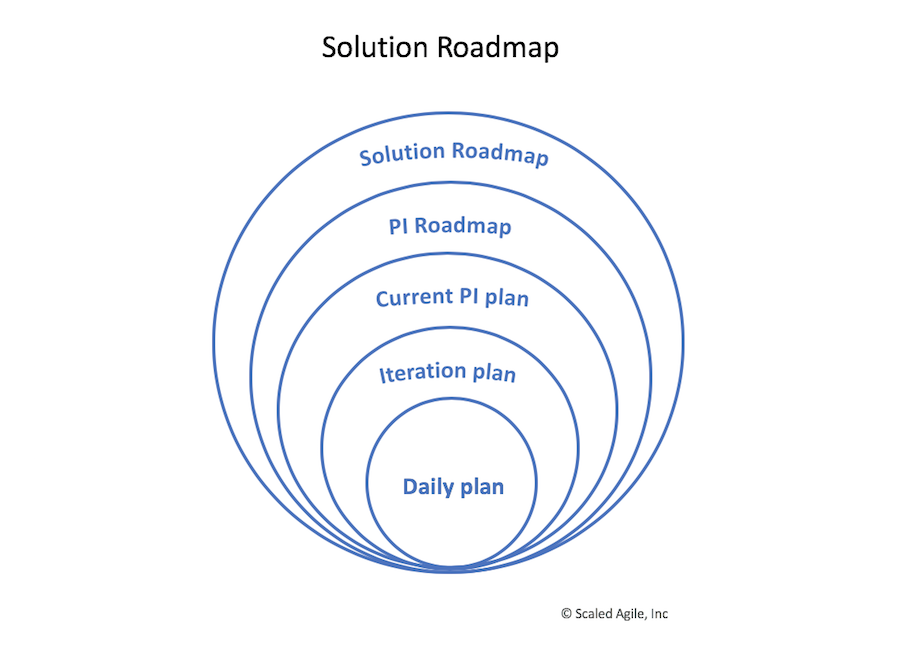Pattern Description
The backlog contains committed stories (features, capabilities, epics) for the next N iterations (sprints, program increments, etc.).
Issue, Problem, Risk
Any sprint (iteration) should have a clear sprint goal plus a set of user stories paying into this sprint goal. This is the commitment we need.
When we now think about scaled agile we need to have a product backlog containing features. The top-trio features will go into the product increment planning (PIP) and will be regarded as being set for the next PI (typically: next quarter).
When we are talking mid-term or long-term product development, one of the charms of agile development (actually: one of the key advantages) is the possibility to change our path towards maximum customer value of the product under development.
In Scrum this is done by sprint retrospectives/reviews and re-proritized product backlogs.
In SAFe, thus in a scaled agile environment, this is done on the next higher level: the PI Inspect & Adapt stage (https://www.scaledagileframework.com/inspect-and-adapt).
The Concept of „Roadmap“

„The PI roadmap consists of a committed plan for the current PI and offers a forecast of the deliverables and milestones for the next two to three PIs. For the outlying PIs, these may may be indicated as Features or Epics and even Milestones.“ (cf. https://www.scaledagileframework.com/roadmap/).
Root Cause
You are part of a non-agile organization
If an agile team (agile release train) is part of a non-agile organization, the non-agile management has it’s own ideas about mid-term targets. If the ART has to commit to these targets the product roadmap will be committed for more than one PI as well.
Your have non-agile past
… to be continued.
Mitigation, Remedy, How to avoid
- Commit to one PI.
- Be clear the next PI feature sets are forcasts, nothing less, nothing more.